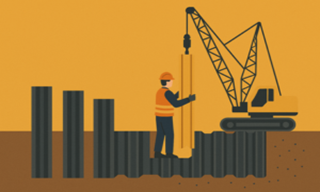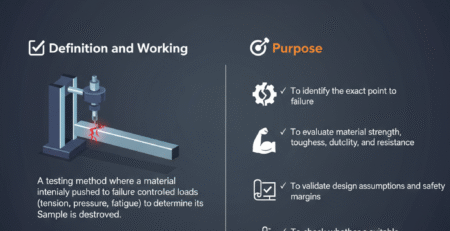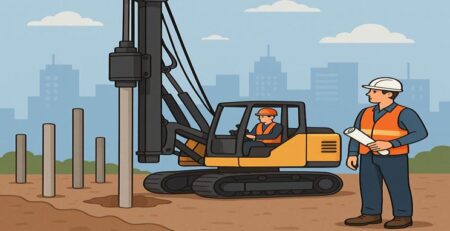Stone Column Ground Improvement: Complete Guide, Process & Real-World Benefits
Stone Columns are one of the most trusted ground improvement solutions used worldwide to enhance weak soil and support heavy structures. Whether you’re working on highways, industrial buildings, embankments, or commercial foundations, stone columns provide a fast, reliable, and cost-effective way to strengthen the ground.
In this blog, we’ll explain everything—how stone columns work, the installation process, applications, and why this technique is widely preferred in geotechnical engineering.
What Are Stone Columns?
A stone column, also known as a vibro stone column, is a vertical column constructed by inserting compacted aggregates into weak soil. These columns reinforce the ground, reduce settlement, and improve load-bearing capacity.
The method is especially effective in soft clays, loose silts, and granular soils.
Why Stone Columns Are Used
Stone columns work on three main principles:
1. Soil Densification
The process increases the strength of loose or soft soil.
2. Load Transfer
Stone columns act like strong vertical pillars transferring load to deeper soil layers.
3. Faster Drainage
Aggregates enhance soil permeability, reducing pore pressure and allowing faster consolidation.
Stone Column Installation Process: Step-by-Step
There are two main methods used for Stone Column construction — Vibro Replacement (Wet/ Dry) and Top-Feed Bottom-Feed Method. Here is the general installation process:
1. Geotechnical Investigation
Engineers conduct soil tests, bore logs, SPT, CPT, and laboratory analysis to understand soil behavior, density, depth, and groundwater conditions.
2. Vibroflotation / Vibro-Replacement
A powerful vibro probe is lowered into the soil using its own vibration and jetting action (for wet method) or compressed air (dry method). This creates a cylindrical cavity.
3. Placing Stone Aggregates
Crushed stones or gravel are added into the cavity either from the top or bottom, depending on the equipment.
4. Compaction
The vibro probe compacts stones in layers, forming a dense column. The process continues until the designed diameter and depth are achieved.
5. Quality Checks
After installation, engineers conduct CPT testing, load tests, and settlement monitoring to ensure the stone columns meet performance requirements.
Where Stone Columns Are Used: Major Applications
Stone Columns are ideal for enhancing soils under:
1. Road & Railway Embankments
Provides stability and reduces settlement under heavy traffic and dynamic loads.
2. Industrial & Commercial Buildings
Perfect for warehouses, factories, storage tanks, and logistics hubs.
3. Residential & Low-Rise Structures
Improves foundation performance in soft, compressible soils.
4. Liquefaction Mitigation
Stone columns mitigate liquefaction in earthquake-prone zones by improving drainage and soil stiffness.
5. Port & Marine Structures
Used for container yards, breakwaters, and coastal structures.
6. Ground Improvement for Highways
Ensures uniform settlement and long-term stability of road infrastructure.
Types of Stone Column Techniques
1. Dry Vibro Replacement Method
Uses compressed air and a vibro probe to form the column — ideal in cohesionless soils.
2. Wet Vibro Replacement Method
Uses water jetting to penetrate the soil — ideal for dense, cohesive soils.
3. Top Feed System
Stones are dropped from the top of the borehole.
4. Bottom Feed System
Aggregates are fed through the vibro probe — best for underwater or high groundwater conditions.
Advantages of Stone Columns
1. Cost-Effective Foundation Improvement
Cheaper than deep foundation methods like piling.
2. Faster Construction Time
Rapid installation helps maintain project timelines.
3. Excellent Drainage
Helps reduce pore pressure and improve soil stability.
4. Environment-Friendly
Uses natural aggregates—no chemicals involved.
5. Suitable for Weak Soil Conditions
Performs well in clay, silt, and loose sand.
Stone Columns vs Other Ground Improvement Methods
| Method | Suitable Soil | Cost | Effectiveness |
|---|---|---|---|
| Stone Columns | Soft–medium soils | Economical | High |
| Piling | Very poor soils | Costly | Very High |
| Sand Compaction Piles | Granular soils | Moderate | Medium |
| Jet Grouting | Complex soils | Expensive | Very High |
Stone Columns stand out as a balance between cost, performance, and installation speed.
Why Industries Prefer Stone Columns
-
High load-bearing capacity
-
Minimal vibration and environmental impact
-
Quick installation
-
Better long-term settlement control
-
Suitable for various project types
Conclusion
Stone columns are a powerful and proven ground improvement technique that deliver strength, stability, and long-term reliability to weak soils. Thanks to their speed, cost-effectiveness, and environmental friendliness, they remain a preferred choice for modern infrastructure, industrial construction, and heavy load foundations.
If your project requires safe and stable ground improvement, stone columns offer one of the most dependable solutions.












Leave a Reply